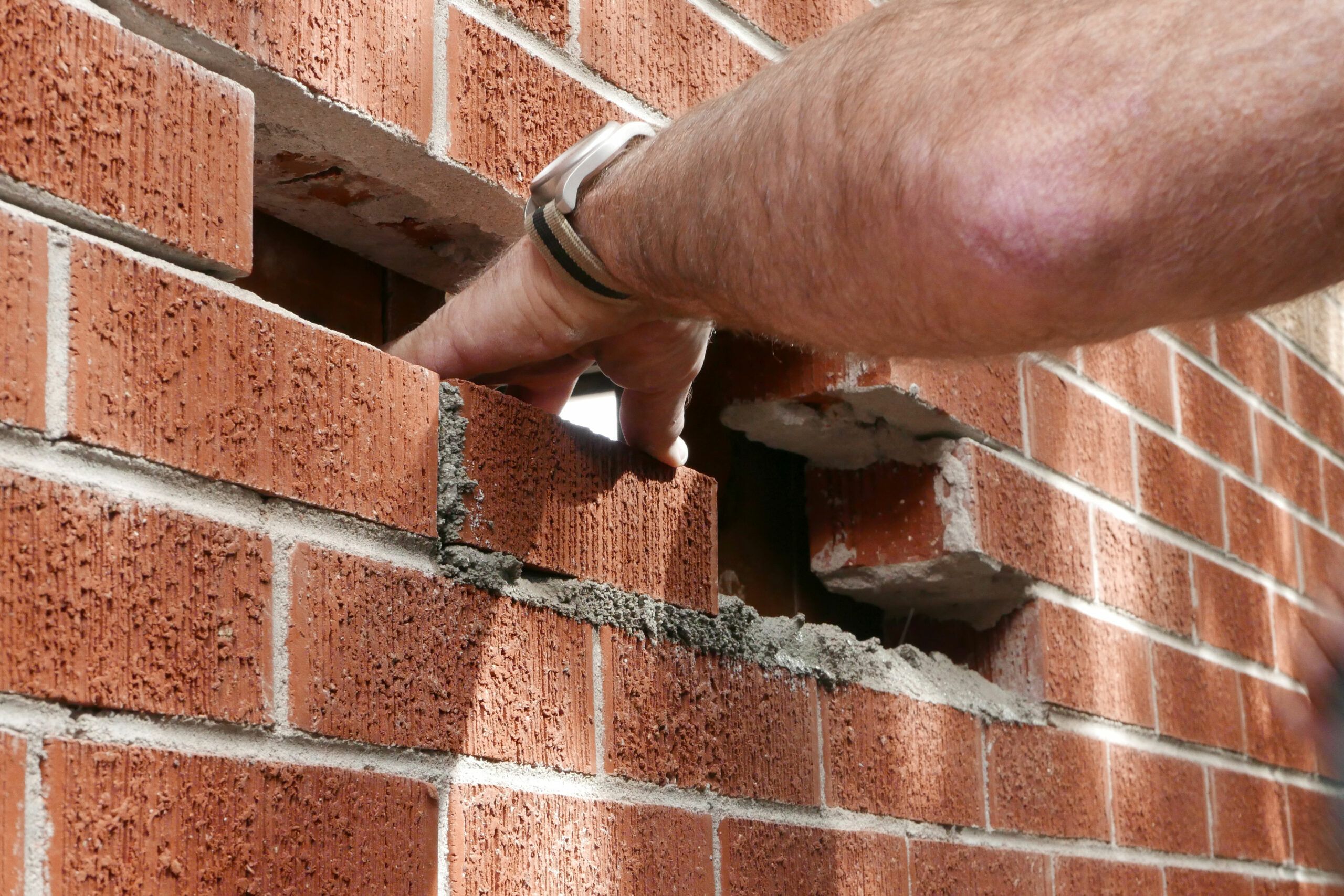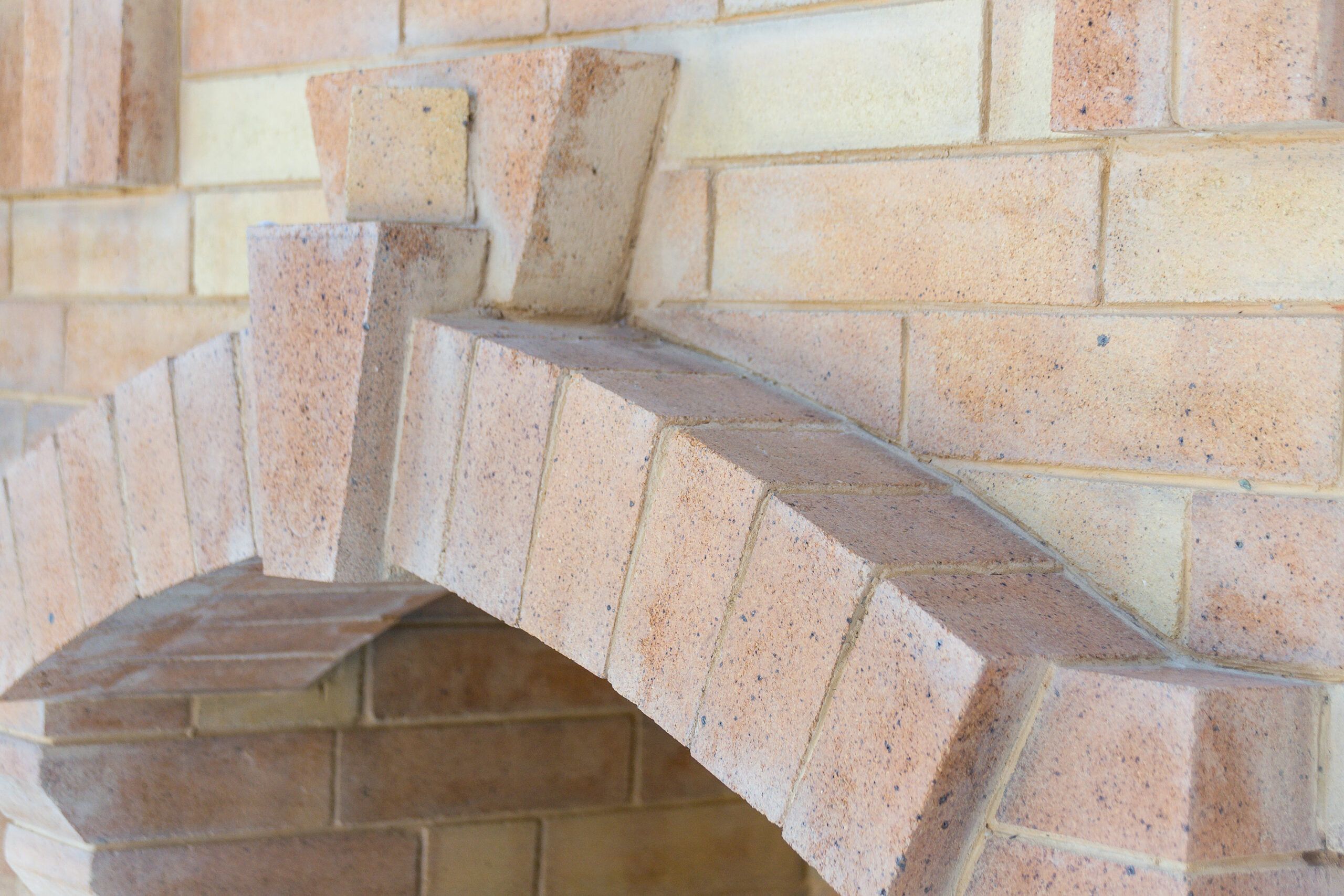Staining your brick wall or fireplace is a simple way to breathe new life into your space. Unlike paint, which sits on top of the brick, staining penetrates the brick’s porous surface to alter its color while maintaining its natural texture and character. This creates a more authentic and long-lasting finish than paint. Stains are available in various colors, from subtle earth tones to bold, contemporary hues. We’ll go over everything you need to know in our comprehensive guide.
How To Choose the Right Brick Stain
Consider your brick’s condition, your home’s architecture, and your personal preferences to select a brick stain. Water-based, oil-based, semi-transparent, and solid stains all offer different appearances and benefits. Consider the following factors:
- Brick condition: Evaluate the current condition of your brick. Old, weathered, or damaged bricks may require more intensive preparation before staining.
- Desired look: Determine the look you want to achieve. Whether you prefer a subtle enhancement or a bold change, the stain you choose will influence your brick’s final appearance. Sampling different stains on small and inconspicuous areas can help you visualize the result.
- Environmental impact: Consider the environmental impact of your stain choice. Water-based stains are generally more environmentally friendly than oil-based options.
Water-Based Stains
Water-based stains are known for their eco-friendliness and ease of application. They penetrate the brick’s surface and come in a wide range of color options. These stains are also less likely to emit harmful fumes, making them a safer choice for indoor projects.
Oil-Based Stains
Oil-based stains provide deep penetration and robust color. They’re highly durable and generally longer-lasting than water-based options. However, applying oil-based stains requires more preparation and caution due to their potent fumes and longer drying times.
Semi-Transparent Stains
Semi-transparent stains enhance the brick’s natural texture while providing a subtle change in color. They’re a good choice for homeowners who want to refresh their brick without drastic alterations.
Solid Stains
Solid stains provide opaque coverage, making them suitable for bricks with significant discoloration or imperfections. They can dramatically change the appearance of your brick.
Step-by-Step Guide to Brick Staining
Staining brick requires careful planning, proper materials, and meticulous application to achieve the best results.
Preparation
Before starting your staining project, make sure your brick surface is clean and free of debris and the surrounding area is covered.
Cleaning
Clean the brick surface using a pressure washer or a stiff brush with soapy water. Remove dirt, mildew, and efflorescence to create a clean, absorbent surface for the stain. Allow the brick to dry completely before moving on.
If you’re using a pressure washer, bring the pressure down to around 1,000 PSI (1,500 at the max) and watch to ensure you’re not blasting the mortar away.
Protecting Surrounding Areas
Cover surrounding areas, such as windows, doors, and landscaping, with drop cloths or plastic sheets to protect them from stain splashes.
Repairing Damage

Inspect the brick-and-mortar joints. The bricks will likely be in good condition, but mortar can deteriorate over time.
Make mortar repairs where necessary. Prepare mortar mix by following the manufacturer’s directions on the bag. Then, with the pointing trowel, replace any deteriorated mortar with the fresh mix. Be sure to work the mortar as far into the joint as possible and shape the repair to blend in with the rest of the joint. Give the mortar at least a few days to dry before staining.
Stain Application
Properly applying the stain helps you achieve even coverage and a professional finish.
Choosing the Right Tools
Use tools like brushes, rollers, or quality paint sprayers for your staining project. Choose the option that best suits the type of stain you’re using and the size of the brick surface.
Mixing the Stain
Like paint, stain will separate in the can over time, with the pigments sinking to the bottom and solvents rising to the top. These components need thorough mixing to ensure the finished product is even and consistent.
The best tool for mixing masonry stain is a drill with a paint mixer attached. Place the end of the mixer in the stain and mix until the entire contents incorporate with each other. You can also use a wooden paint stirrer—it will just take longer.
Depending on the manufacturer, you might need to dilute the first coat. If that’s the case, use a clean bucket and add the water according to the manufacturer’s recommendation.
Testing the Stain
Test the stain on a small, inconspicuous area of the brick to check for color accuracy and adhesion. This step helps you make adjustments before committing to the entire surface.
Applying the Stain
Apply the stain evenly, working in small sections to maintain a wet edge and avoid lap marks. Follow the manufacturer’s guidelines for application techniques and drying times. Multiple coats may be necessary to achieve the desired color and coverage.
Using an inexpensive paint sprayer is more efficient than rolling and brushing the stain onto the brick. Load it by removing the hopper and filling it up to the “max” line. Reattach the hopper to the paint sprayer and prime it by plugging it in, pointing it at a piece of cardboard, and holding the trigger until it sprays. Twist the spray nozzle so the spray pattern is vertical. Here’s how to spray the brick using a paint sprayer:
- Hold the sprayer roughly twelve inches from the brick’s surface and at a slight angle.
- While holding the trigger, sweep the sprayer from left to right, overlapping the last pass by half. Continue sweeping back and forth until you coat the entire brick surface. Use an old paintbrush to clean up any puddles or even out the mortar joints.
- After allowing it to dry (the time will depend on the humidity, temperature, and how heavy a coat you applied), apply another coat. If possible, twist the spray nozzle so the spray pattern is horizontal and apply this coat in an up-and-down motion. Again, overlap the last pass by half.
- Continue applying coats in this manner, alternating spray patterns, until the brick surface looks as planned.
Final Steps
After staining, take the following steps to protect and maintain your newly stained brick.
Sealing
Consider applying a sealant to enhance the stain’s longevity and protect your brick from weathering and UV damage. Choose a sealant compatible with the type of stain you used.
Maintenance
Inspect and clean your stained brick periodically to maintain its appearance. Avoid harsh chemicals and pressure washing, which can damage the stain and underlying brick.
Common Mistakes To Avoid During Brick Staining
Brick staining can transform your space, but mistakes can occur if you aren’t careful. Knowing common errors can save you the hassle of restaining and help you achieve a clean finish.
Inadequate Surface Preparation
Failing to thoroughly clean and prepare the brick surface can lead to poor stain adhesion and uneven color. Remove all dirt and residue before starting.
Choosing the Wrong Stain Type
Try to match the stain type to your brick’s condition and your desired aesthetic. Always sample the stain first.
Ignoring Environmental Conditions
Temperature and humidity can affect stain application and drying times. To ensure the best results, stain brick only under optimal weather conditions. Avoid staining during extreme temperatures or high humidity levels.
Skipping Sealant Application
Skipping the application of sealant can reduce the lifespan of your stained brick. A sealant provides extra protection against environmental factors and enhances the stain’s durability.
Professional Brick Staining Services vs. DIY
Deciding between professional brick-staining services and a do-it-yourself (DIY) approach involves weighing several factors, including cost, skill level, and the project scope.
Professional Brick Staining Services
Hiring a professional brick-staining service offers several advantages, including the following:
- Expertise: Professionals have the knowledge and experience to handle brick-staining projects. They understand the nuances of different stain types and application techniques, so you’ll likely receive a high-quality finish.
- Time-saving: Professionals often complete these projects faster than a DIY approach, saving you time and effort.
- Warranty: Many professionals offer warranties on their work, providing peace of mind and protection against potential issues.
DIY Brick Staining
You may also take the DIY approach. Here are a couple of advantages of DIY:
- Cost savings: DIY staining is cheaper than hiring professionals. You can save on labor costs by doing the work yourself. Angi estimates that hiring professional labor adds 50% or more to the project cost.
- Control: A DIY approach allows you to have complete control over the project, from stain selection to application techniques.
Our Conclusion
Brick staining is an excellent way to revamp the appearance of your brick surfaces, offering durability, visual appeal, and versatility. Whether you hire professionals or tackle the project yourself, understanding the process and avoiding common mistakes will help you achieve a beautiful finish.

